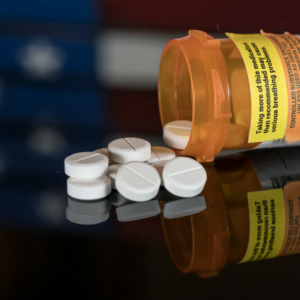Were you prescribed opioids instead of OTC pain meds?
 According to a new study, it turns out that, potentially, millions of people should have been prescribed over-the-counter drugs—not addictive narcotics. That’s a major finding considering 600,0000 Americans have died from drug overdose between 1999-2016. The Journal of the American Medical Association (JAMA) study shows that over-the-counter medications, such as ibuprofen, acetaminophen, aspirin and naproxen may work better than the hard, addictive stuff, such as Vicodin, Oxycontin, and Fentanyl.
According to a new study, it turns out that, potentially, millions of people should have been prescribed over-the-counter drugs—not addictive narcotics. That’s a major finding considering 600,0000 Americans have died from drug overdose between 1999-2016. The Journal of the American Medical Association (JAMA) study shows that over-the-counter medications, such as ibuprofen, acetaminophen, aspirin and naproxen may work better than the hard, addictive stuff, such as Vicodin, Oxycontin, and Fentanyl.
We recognize and respect the role that properly prescribed prescription narcotics have played and will continue to play in pain management. However, we also believe that Big Pharma makers and sellers of opioids caused this national crisis of drug addiction by helping to create looser prescribing rules. In other words, while at one-time opioid medications were viewed as a last resort to treat serious pain, drug companies pushed medical education that led to the prescribing of opioid drugs. The U.S. Centers for Disease Control and Prevention has revised its guidelines to encourage far tighter prescribing practices, but, as this study indicates, their revisions came way too late.
Patients Who Took Opioids
The JAMA study looked at 248 patients with varying levels of pain, back pain being the most prevalent form affecting 65% of patients. Others had pain associated with hip, knee and that associated with osteoarthritis. One group of patients were prescribed opioid medications. They started with fast acting morphine, a combination of hydrocodone and acetaminophen, or oxycodone. Long acting medications, morphine or oxycodone, were used when the short acting treatments were not working. When those did not work, fentanyl patches were prescribed.
Patients Who Took Non-opioids
Another group took NSAIDs. If NSAIDs did not work, then the group took other prescription medications, such as gabapentin (Neurontin) or pregabalin (Lyrica). If those didn’t work, then tramadol, which is an opioid-based painkiller but less addictive than the ones in the opioid group.
Results of the Study
Patients in the non-opioid group reported equal or better results in pain alleviation than patients in the opioid group. Admittedly, I’m confused because tramadol was in the non-opioid group, even though it’s an opiate-based medication. Also, one shortcoming variable of the study is that patients knew what medications they were taking, which could have biased their reporting.
Overall, the study strongly demonstrates that millions who were prescribed strong opioid drugs and became hooked could just as well have been treated initially with regular OTC pain medications. Not surprisingly, patients could have also saved billions of dollars over the last few decades by taking aspirin instead of brand-name prescription opioids.
This has really caught my attention because the industry-funded groups like the Alliance for Safe Online Pharmacies and Partnership for Safe Medicines equates importation from Canada with the opioid crisis. Instead of urging people to seek alternatives to opioids, the pharmaceutical industry propagates the senseless idea that increasing imports of lower cost (non-pain) medications from Canada will worsen the opioid crisis. They would rather point fingers than address the sickness of their complicity in creating the drug addiction crisis in the first place.
Tagged with: Alliance for Safe Online Pharmacies, CDC, JAMA, NSAIDs, opioids, OTC, Partnership for Safe Medicines


